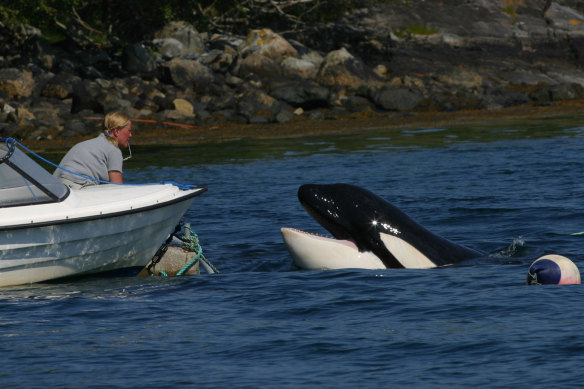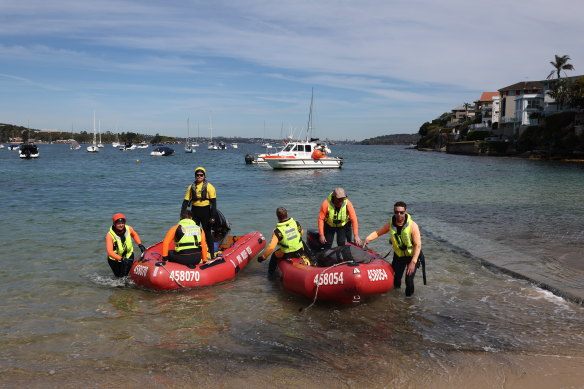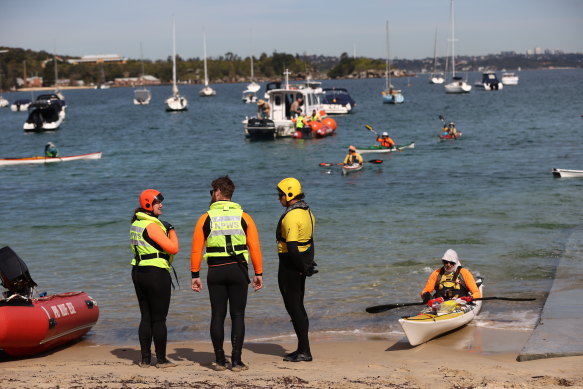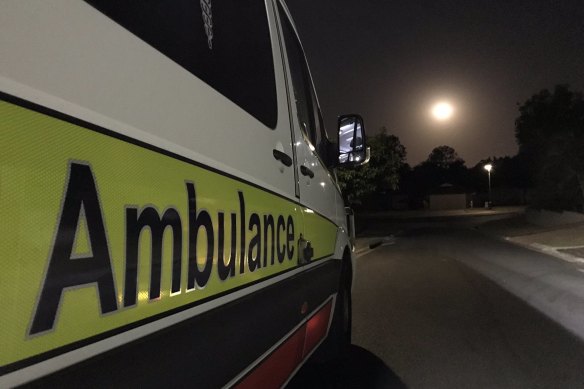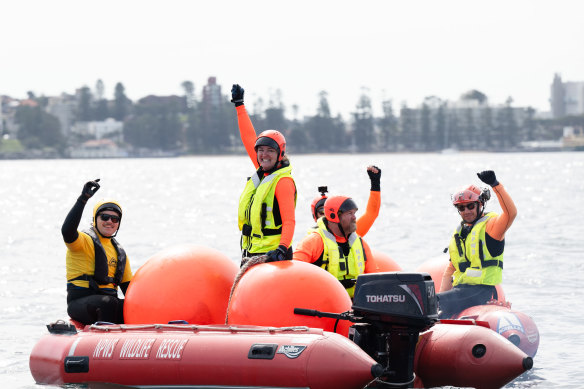Entanglements with marine debris are the risk to whales, besides the overarching risk of climate change.
The International Whaling Commission estimates that globally, 300,000 whales die of entanglements every year. The next biggest direct risk is ship strikes, at 20,000 deaths a year.
Whale numbers have increased since whaling was banned in international waters, but their food source is under threat from climate change and unsustainable fishing practices.
Commercial fishing trawlers suck up vast quantities of Antarctic krill to turn into pet food, health supplements and farmed salmon feed.
The debris includes fishing lines, nets and traps, and also equipment for swimming including shark nets, which have come under fire for the number of entanglements with non-target animals including the critically endangered grey nurse sharks, turtles and marine mammals.
However, Luke McSweeney, team leader of the disentanglement team, said whales did not often become entangled in shark nets, and his team was trained to deal with it.
Authorities don’t yet know for sure whether the marine debris wrapped around this whale’s tail was from fishing. It was described by Chris Borrow-Jones from the disentanglement team, as “nylon stranded rope”.
ORRCA second vice president Jessica Fox said ship strikes occurred less often in Australian waters, but entanglements were a big problem.
Loading
Earlier we reported there were at least three other whale entanglements on the NSW coast. Fox said that calmer weather meant more people out on the water and better able to see whales, increasing the frequency of sightings and reports of entanglements.
She also said some equipment could have been dislodged in the recent winter swell. This same weather event, which happens most winters, caused coastal erosion to NSW beaches and uncovered a rocky cove at North Maroubra.
Many opponents to offshore wind farms cite their concerns for whales, but the idea that wind farms kill whales is part of an organised disinformation effort.
